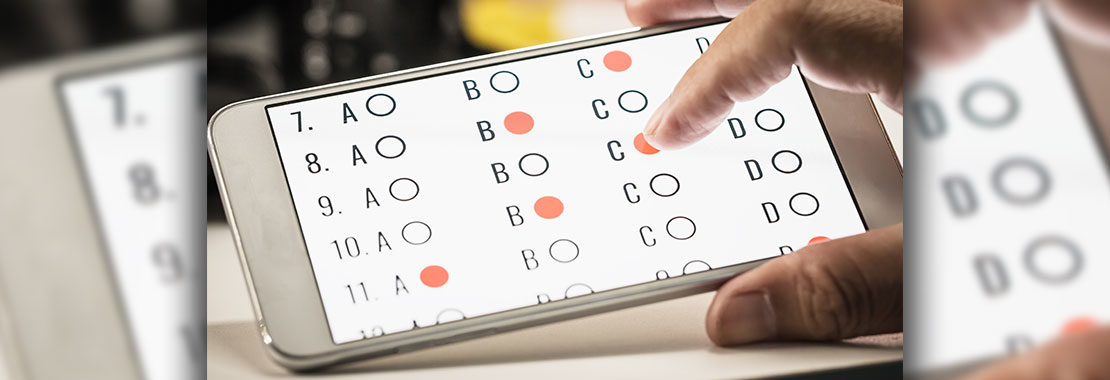Author: Alana Joli Abbott
Exam Question Types
Which test question type do you use: true or false? Multiple choice? Long-form essay? What is the best strategy for creating exam questions?
When you’re designing an exam, consider what you want to be able to gauge in your college students’ knowledge in order to choose the best types of questions to measure their learning. There are benefits and disadvantages to any type of question, so consider these exam tips when deciding what teaching strategies to employ when you create your exam.
Difficulty creating or difficulty grading?
In McKeachie’s Teaching Tips, Fourteenth Edition, Wilbert J. McKeachie and Marilla Svnicki noted that exams have two pieces that are time-consuming for professors: construction and grading. “Unfortunately,” they wrote, “it appears to be generally true that the examinations that are easiest to construct are the most difficult to grade and vice versa” (McKeachie, 86). Multiple choice and true or false tests are certainly easy to grade and are tempting to offer to large classes due to the volume of tests being taken.
But the knowledge you can gain about your college students’ learning can be limited by these forms: true or false questions, for example, give test takers a 50% chance of being right on any question. Multiple choice questions are better, but it can be difficult to construct questions that have plausible incorrect choices. They are also less geared toward accomplishing higher level goals, according to McKeachie and Svnicki, who recommend using “some essay questions, problems, or other items requiring analysis, integration, or application” (McKeachie, 86).
Types of questions
Advantages and Disadvantages of Types of Exam Questions
- Multiple choice questions are versatile and require students to do little writing during the exam. But according to the “Designing Test Questions” exam tips guide from the UNC Charlotte Center for Teaching and Learning website, writing good multiple choice questions can be challenging. The team behind that article recommended creating a “single, clearly formulated problem” without any “extraneous words” for each question, as well as a number of other tips.
- Well written problems, which tend to appear most in math and science disciplines, can show how much students understand the process of problem-solving, particularly when they are given credit primarily for showing their process rather than finding the correct answer. Problems that are too simplistic, however, may not show whether or not students actually understand the steps they are following or the formulas they are using.
- Short-answer questions can measure student knowledge if they are limited and well-defined without just asking students to regurgitate facts. To emphasize critical thinking, you can ask students to make a hypothesis or solve a problem related to the course material. These answers require attention when grading and are best accompanied by comments rather than simple points during the grading process.
- Essay questions are the easiest to design but hardest to grade. As one essay question takes college students a higher portion of their time, they are tested on less material. However, students study more efficiently for essay tests and are likely to study broadly if they don’t know the topic in advance.
Resource:
Reference: McKeachie, Wilbert J. and Marilla Svinicki. 2014. McKeachie’s Teaching Tips, 14th ed. Belmont, CA: Wadsworth.




